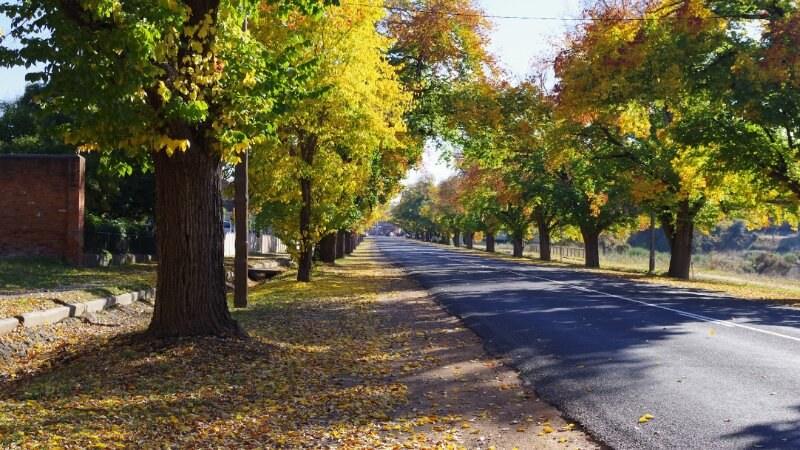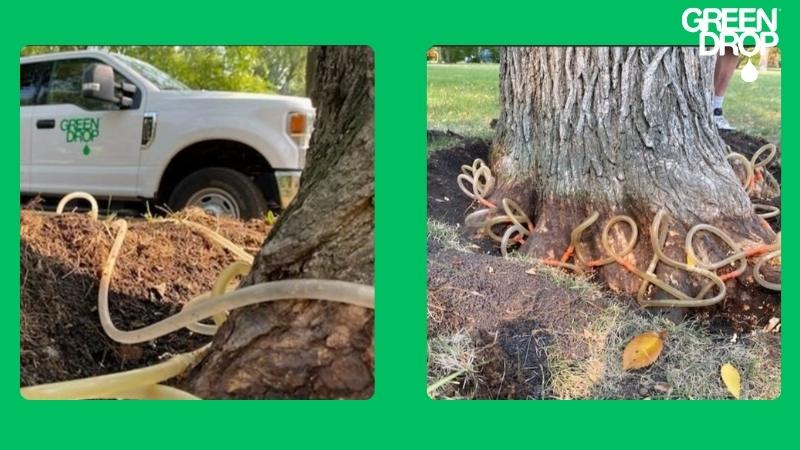Saving Winnipeg’s Elms: How to Spot and Stop Dutch Elm Disease

For those of us who don’t know what DED is, Dutch Elm Disease is a highly infectious and deadly fungal disease that has devastated elm tree populations across North America
Since 2016, Winnipeg, specifically, has lost more than 33,000 elm trees to Dutch elm disease. To put that in perspective, that’s like wiping out every tree on 330 city blocks in just five years—given that each block typically has about 100 elm trees.
True, we can’t stop the spread of Dutch Elm Disease entirely, but we can take action to help our trees withstand it—and that’s where proactive tree care comes in.

Photo credits to unsplash.com
Understanding The Impact of Dutch Elm Disease
Dutch Elm Disease is caused by a fungus (Ophiostoma ulmi) spread primarily by elm bark beetles. Once a tree is infected, the fungus disrupts the tree’s water-conducting system, leading to wilting, leaf discolouration, and, eventually, death if left untreated.
While there’s no cure for DED, early detection and proper care can slow its progress and protect nearby trees.
Here’s What You Can Do to Protect Your Trees

The key to defending against DED lies in maintaining overall tree health. Healthier trees are more resilient and better equipped to withstand disease, pests, and environmental stressors.
Our certified arborists specialize in tree health care, focusing on preventative measures and treatments that can give your trees a fighting chance. We assess your trees, identify potential risks, and create a tailored care plan that promotes health and longevity. This plan may include:
- Regular Tree Inspections: Again, it’s about early detection. Our experts monitor your trees for signs of infection so we can act fast if any issues arise.
- Know the Signs of DED: We’ve addressed this in great detail in our DED blog here, but here’s a gist: look for wilting leaves, branch dieback, yellowing leaves in summer, browning of leaves that stay on the tree, branches with smaller leaves than the rest of the tree, or sudden branch death which typically starts in the upper canopy.
- Preventative Pruning: Removing dead or infected branches helps prevent the spread of DED and encourages healthy new growth.
- Nutrient Enrichment: Trees need proper nutrients to stay strong. We provide deep-root fertilization to ensure your trees are getting everything they need to thrive.
- Prune Wisely: If you’re taking on DIY pruning, remember that it’s illegal to prune elm trees as per the Community Standards Bylaw 14600. This ban on pruning helps prevent the spread of Dutch elm disease.
- Avoid Storing Elm Wood: Don’t store elm firewood on your property, especially wood with bark still attached, as it can harbour elm bark beetles. If you must keep elm wood, debark and cover it with a tarp or burn it immediately to prevent beetles from spreading.
- Report Sick Public Trees: If you see an elm tree that looks sick or shows signs of DED, call 311 or report it online. You’re probably wondering if it’s worth bothering yourself with public trees, but the truth is that DED can spread pretty quickly.
Green Drop Trees’ certified ISA arborist and member of the Trees Winnipeg Board for years, Matt Vinet, says,
“This is the best way to discourage Elm bark beetles, as regular deadwood pruning makes the tree less of an attractant to beetles. Winter is a great time to do this.”
The most common way it spreads is through elm bark beetles, which are attracted to weakened or dead elm trees. These beetles carry fungal spores of the disease from infected trees to healthy ones.
They can also spread through root systems when the roots of adjacent elm trees naturally graft together. If one tree is infected, the fungus can travel through these interconnected roots, infecting nearby trees.
So even if it’s not your trees that are infected, keep an eye out for ones around your property to prevent the spread of DED.

DED Prevention Starts with Tree Health
At Green Drop, we believe that strong, healthy trees are the best defence against Dutch Elm Disease and other threats. Our arborists are dedicated to ensuring that your trees remain resilient for years to come.
If you’re concerned about DED or need help caring for your trees, don’t hesitate to reach out! We’re here to answer any questions you may have and to provide expert guidance to keep your trees in peak condition.
Let’s Work Together to Keep Your Trees Healthy!
Contact Green Drop today to learn more about our comprehensive tree care services in Winnipeg. Let’s take action now to ensure that our elms—and all our trees—stay healthy and strong!
Can you help cities manage Dutch Elm Disease outbreaks?
Do you diagnose and treat tree diseases?
How can I protect my trees from diseases and pests?
Are your arborists certified and insured?
Do you offer both residential and commercial tree care?
Explore Our Latest Insights


5 Signs Your Tree Is in Trouble (And What to Do About It)
